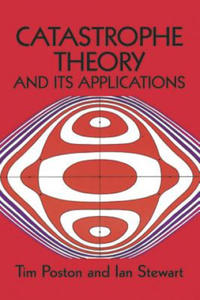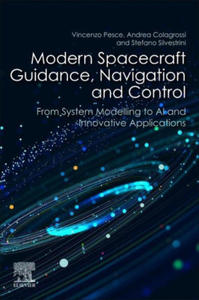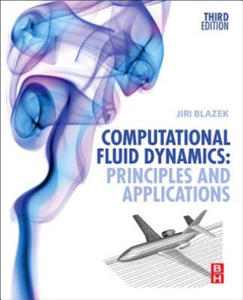libristo applications of liapunov methods in stability 1 2260778
- znaleziono 3 produkty w 1 sklepie
Catastrophe Theory and Its Applications Dover Publications Inc.
Książki / Literatura obcojęzyczna
Preface1 Smooth and sudden changes 1. Catastrophes 2. The Zeeman catastrophe machine 3. Gravitational catastrophe machines 4. Catastrophe theory2 Multidimensional geometry 1. Set-theoretic notation 2. Euclidean space 3. Linear transformations 4. Matrices 5. Quadratic forms 6. Two-variable cubic forms 7. Polynomial geometry3 Multidimensional calculus 1. Distance in Euclidean space 2. The derivative as tangent 3. Contours 4. Partial derivatives 5. Higher derivatives 6. Taylor series 7. Truncated algebra 8. The Inverse Function Theorem 9. The Implicit Function Theorem4 Critical points and transversality 1. Critical points 2. The Morse Lemma 3. Functions of a single variable 4. Functions of several variables 5. The Splitting Lemma 6. Structural stability 7. Manifolds 8. Transversality 9. Transversality and stability 10. Transversality for mappings 11. Codimension5 Machines revisited 1. The Zeeman machine 2. The canonical cusp catastrophe 3. Dynamics of the Zeeman machine 4. The gravitational machines 5. Formulation of a general problem6 Structural stability 1. Equivalence of families 2. Structural stabillty of families 3. Physical interpretations of structural stability 4. The Morse and Splitting Lemmas for families 5. Catastrophe geometry7 Thom's classification theorem 1. Functions and families of functions 2. One-parameter families 3. Non-transversaliity and symmetry 4. Two-parameter families 5. "Three-, four- and five-parameter families" 6. Higher catastrophes 7. Thom's theorem8 Determinacy and unfoldings 1. Determine and strong determinacy 2. One-variable jet spaces 3. Infinitesimal changes of variable 4. Weaker determinacy conditions 5. Transformations that move the origin 6. Tangency and transversality 7. Codimension and unfoldings 8. Transversality and universality 9. Strong equivalence of unfoldings 10. Numbers associated with singularities 11. Inequalities 12. Summary of results and calculation methods 13. Examples and calculations 14. Compulsory remarks on terminology9 The first seven catastrophe geometries 1. The objects of study 2. The fold catastrophe 3. The cusp catastrophe 4. The swallowtail catastrophe 5. The butterfly catastrophe 6. The elliptic umbilic 7. The hyperbolic umbilic 8. The parabolic umbilic 9. Ruled surfaces10 Stability of ships Static equilibrium 1. Buoyancy 2. Equilibrium 3. Stability 4. The vertical-sided ship 5. Geometry of the buoyancy locus 6. Metacentres Ship shapes 7. The elliptical ship 8. The rectangular ship 9. Three dimensions 10. Oil-rigs 11. Comparison with current methods11. The geometry of fluids Background on fluid mechanics 1. What we are describing 2. Stream functions 3. Examples of flows 4. Rotation 5. Complex variable methods Stability and experiment 6. Changes of variable 7. Heuristic programme 8. Experimental realization Combining polymer molecules 9. Non-Newtonian behaviour 10. Extensional flows Degenerate flows 11. The six-roll mill 12. The non-local bifurcation set of the elliptic umbilic 13. The six-roll mill with polymer solution 14. The 2n-roll mill12 Optics and scattering theory Ray optics 1. Caustics 2. The rainbow 3. Variational principles 4. Scattering Wave optics 5. Asymptotic solutions of wave equations 6. Oscillatory integrals 7. Universal unfoldings 8. Orders of caustics Applications 9. Scattering from a crystal lattice 10. Other caustics 11. Mirages 12. Sonic booms 13. Giant ocean waves13 Elastic structures General theory 1. Objects under stress 2. Elastic equilibria 3. Infinite-dimensional peculiarities Euler struts 4. Finite element vision 5. Classical (1744) variational version 6. Perturbation analysis 7. Modern functional analysis 8. The buckling of a spring 9. The pinned strut The geometry of collapse 10. Imperfection sensitivity 11. "(r, s)-Stability" 12. Optimization 13. Symmetry: rods and shells Buckling plates 14. The von Kármán equations 15. Unfolding a double eigenvalue Dynamics 16. Soft modes 17. Stiffness14 Thermodynamics and phase transitions Equations of state 1. van der Waals' equation 2. Ferromagnetism Thermodynamic potentials 3. Entropy 4. Transforming the maximum entropy principle 5. Legendre transformations 6. Explicit potentials 7. The Landau theory Fluctuations and critical exponents 8. Classical exponents 9. Topological tinkering 10. The rôle of fluctuations 11. Spatial variation 12. Partition functions 13. Renormalization group 14. Structural stability of renormalization The rôle of symmetry 15. Even functions 16. The shapes of rotating stars 17. Symmetry breaking 18. Tricritical points 19. Crystal symmetries 20. Spectrum singularities15 Laser physics Preliminaries 1. Atoms 2. Field 3. Interaction 4. Measurement The laser catastrophe 5. Unfolded Hamiltonian 6. Equations of motion 7. Mean field approximation 8. Boundary conditions 9. Non-equilibrium stationary manifold Experiments 10. Laser transition 11. Optical bistability 12. Photocount distributions Analytic correspondence 13. Equilibrium boundary conditions 14. Equilibrium manifold 15. Thermodynamic phase transition 16. Critical behaviour 17. Analytic correspondence of experiments &
Sklep: Libristo.pl
Modern Spacecraft Guidance, Navigation, and Control Elsevier - Health Sciences Division
Książki / Literatura obcojęzyczna
Modern Spacecraft Guidance, Navigation and Control: From System Modelling to AI and Innovative Applications provides a comprehensive foundation of theory and applications of spacecraft GNC, from fundamentals to advanced concepts including modern AI-based architectures with focus on software and hardware practical applications. Divided into 3 parts, this book begins with a historical introduction of spacecraft GNC and proceeds to discuss basic tools (part 1) including an overview of the main dynamical models in space, spacecraft attitude dynamics and stability analysis, sensors and actuators. Part 2 covers guidance, navigation and control including on-board and ground-based methods using applications such as launchers, rendezvous, landing, gravity assist, low thrust, and attitude guidance. It also discusses classical and novel control techniques, and software and hardware validation and verification. The final part discusses AI and modern applications featuring different applicative scenarios with particular attention on artificial intelligence and the possible benefits when applied to spacecraft GNC. Presenting a wide and balanced treatment of spacecraft GNC with fundamental theory, modern applications and artificial intelligence, this new book is for aerospace engineers, GNC/AOCS engineers, avionic developers, and AIV/AIT technicians. Describes the application of artificial intelligence to spacecraft Presents modern and cutting-edge algorithms currently used in research and applications Covers the basic tools and ideas to derive GNC requirements from the main mission
Sklep: Libristo.pl
Computational Fluid Dynamics Elsevier Science & Technology
Książki / Literatura obcojęzyczna
Computational Fluid Dynamics: Principles and Applications provides students, engineers and scientists with a solid understanding of the numerical methods and principles underlying modern computation techniques in fluid mechanics. Providing complete coverage of the essential knowledge required in order to write code or understand commercial codes, the book gives the reader an overview of fundamentals and solution strategies in the early chapters before moving on to cover the details of different solution techniques. This new edition is updated throughout, with new worked programming examples and expanded coverage of: . Incompressible flows . Discontinuous Galerkin Method . Lattice Boltzmann Method . Tensor notation . Parallelization The accompanying companion website contains the sources of 1-D and 2-D Euler and Navier-Stokes flow solvers (structured and unstructured) and grid generators, along with tools for Von Neumann stability analysis of 1-D model equations and source code for a dedicated visualization software. . Providing complete coverage of the essential knowledge required to write code or understand commercial codes. .Includes new worked programming examples and expanded coverage of incompressible flows, Discontinuous Galerkin Method and Lattice Boltzmann Method, among other topics. . Accompanying companion website contains the sources of 1-D and 2-D Euler solvers as well as grid generators and source code for a dedicated visualization software.
Sklep: Libristo.pl
Sklepy zlokalizowane w miastach: Warszawa, Kraków, Łódź, Wrocław, Poznań, Gdańsk, Szczecin, Bydgoszcz, Lublin, Katowice
Szukaj w sklepach lub całym serwisie
1. Sklepy z libristo pl applications of liapunov methods in stability 1 2260778
2. Szukaj na wszystkich stronach serwisu
t1=0.265, t2=0, t3=0, t4=0.003, t=0.266



